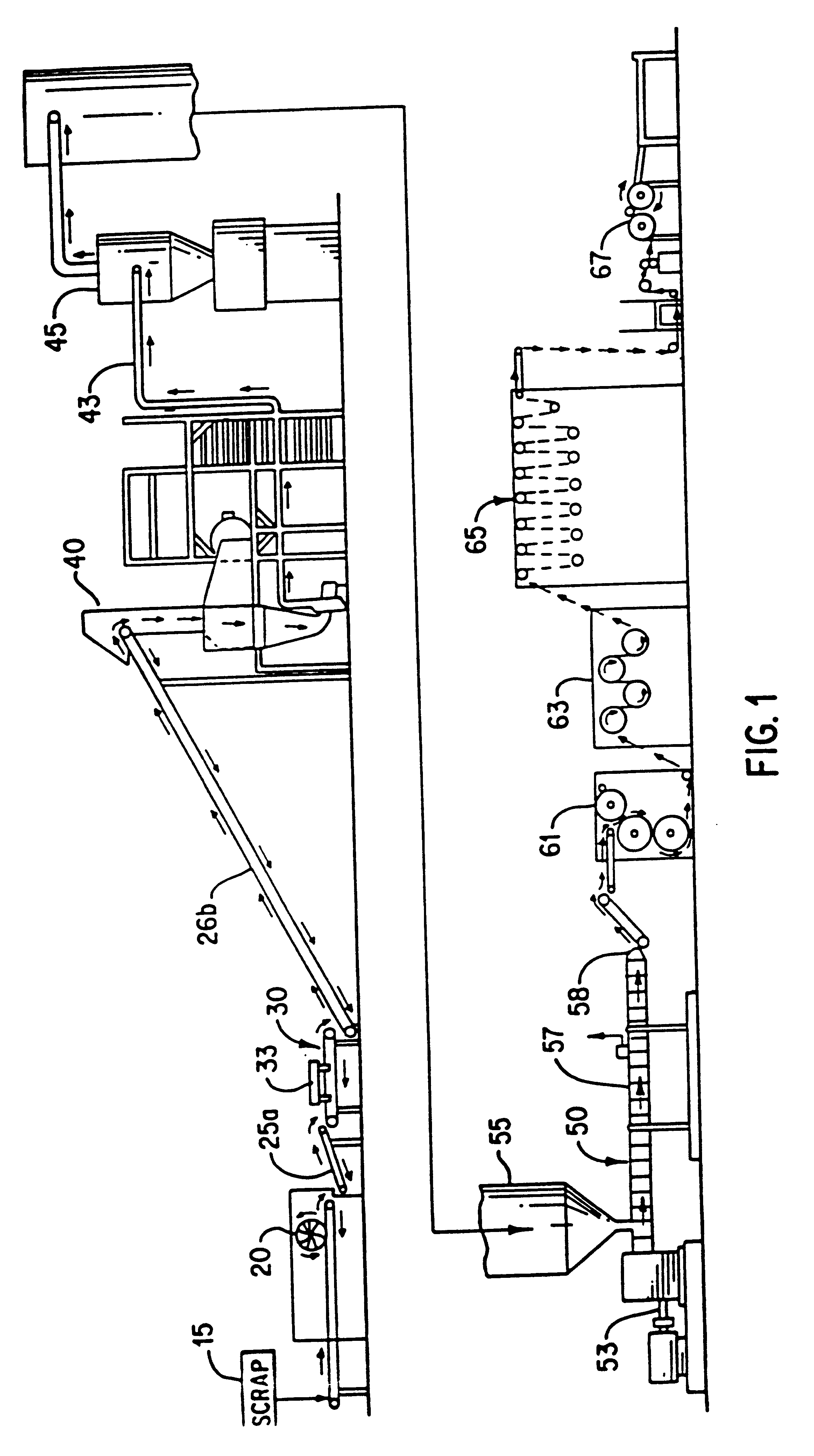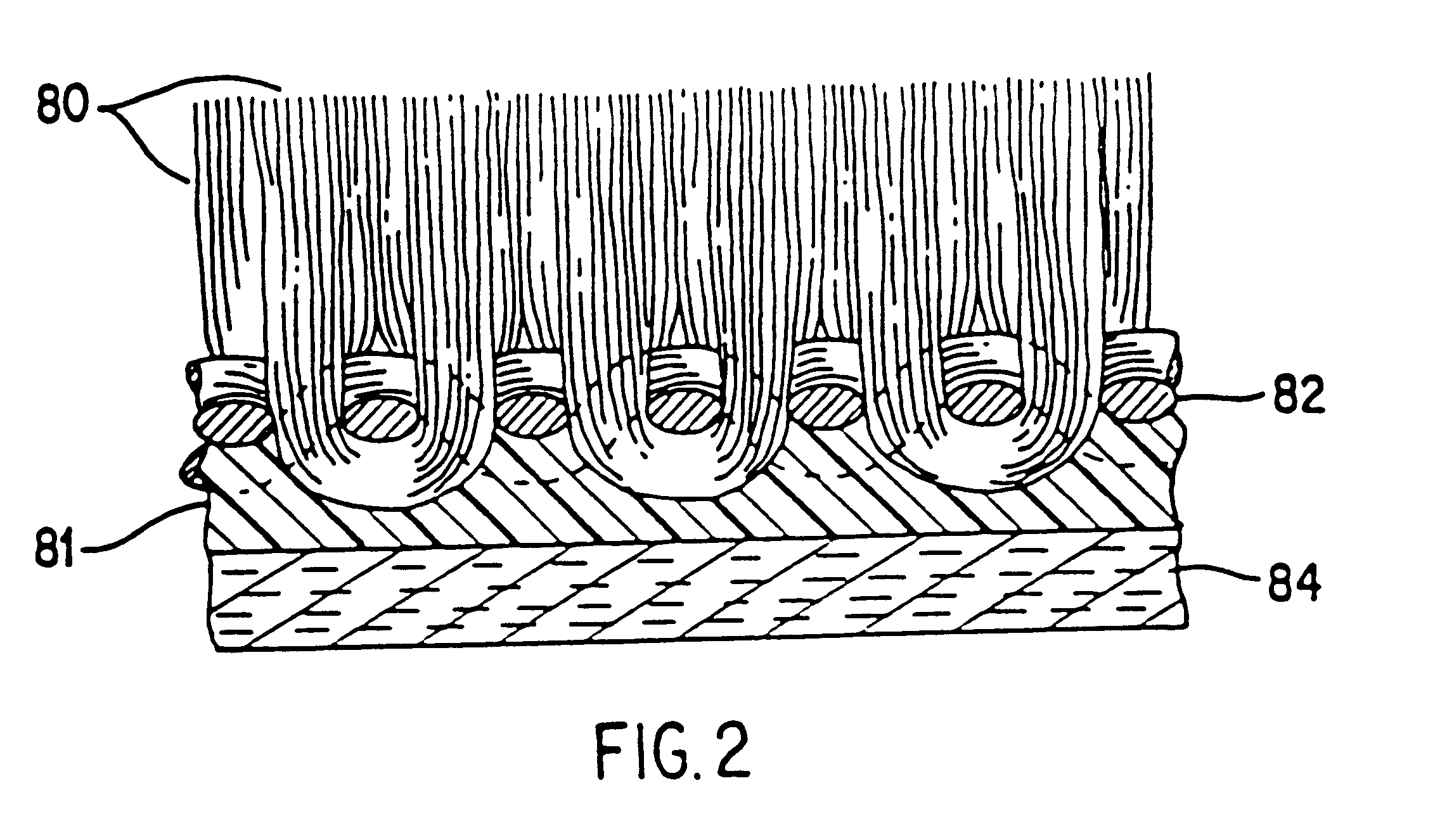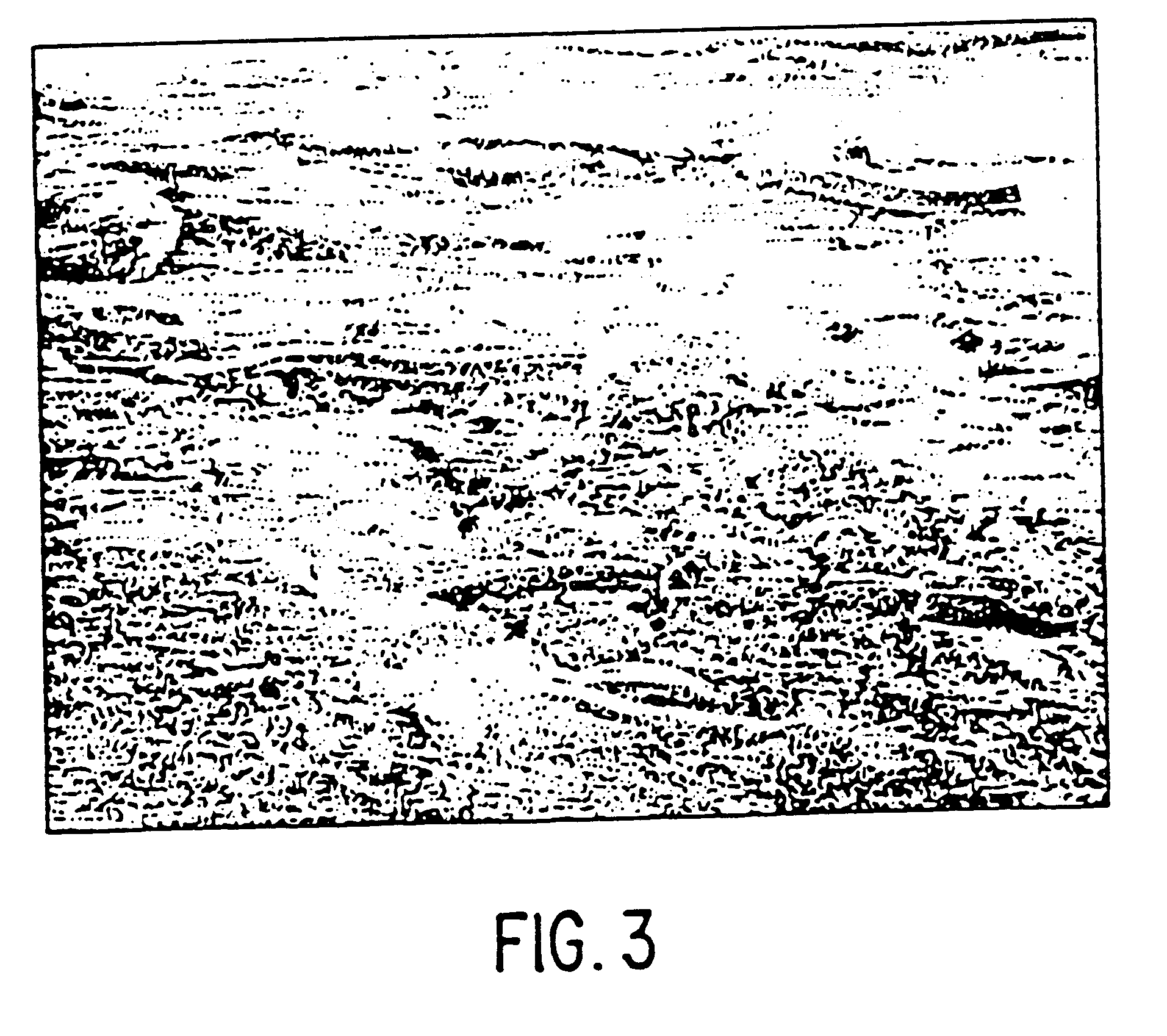Process of recycling waste polymeric material and an article utilizing the same
a polymeric material and waste polymer technology, applied in the field of waste polymer material recycling and an article utilizing the same, can solve the problems of limited recycling of most mixtures of thermoplastic scrap material, adversely affecting mechanical properties (e.g., tensile and impact strength), aesthetic properties, and inability to sort, etc., to achieve the effect of practicality and economic benefits
- Summary
- Abstract
- Description
- Claims
- Application Information
AI Technical Summary
Problems solved by technology
Method used
Image
Examples
Embodiment Construction
The waste, previously used carpet is obtained. The carpet is analyzed for the waste polymeric material present. The following materials are present:
Material Melt Point
polyethylene 100-174.degree. C.
polypropylene 150.degree. C.
polyvinylchloride 116-138.degree. C.
vinyl copolymers 80-81.degree. C.
nylon 6 216.degree. C.
nylon 6,6 255.degree. C.
The waste carpet is chopped into fragments of about 3 / 4 to 1 inch. The fragments are then granulated into a granulated mixture having fragments of less than 3 / 8 inch. The granulated mixture is extruded at a temperature of about 215.degree. C., a pressure of about 120-200 psi and flow rate of about 7-15 thousand pounds per hour. A SEM micrograph of the resulting article is shown in FIG. 3 wherein the edge is cracked from the extruded edge and the view is parallel to the extrusion direction. The orienting of fibers can clearly be seen.
PUM
| Property | Measurement | Unit |
|---|---|---|
| Fraction | aaaaa | aaaaa |
| Temperature | aaaaa | aaaaa |
| Melting point | aaaaa | aaaaa |
Abstract
Description
Claims
Application Information
 Login to View More
Login to View More - R&D
- Intellectual Property
- Life Sciences
- Materials
- Tech Scout
- Unparalleled Data Quality
- Higher Quality Content
- 60% Fewer Hallucinations
Browse by: Latest US Patents, China's latest patents, Technical Efficacy Thesaurus, Application Domain, Technology Topic, Popular Technical Reports.
© 2025 PatSnap. All rights reserved.Legal|Privacy policy|Modern Slavery Act Transparency Statement|Sitemap|About US| Contact US: help@patsnap.com



